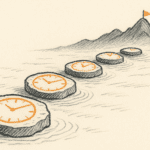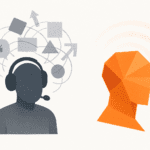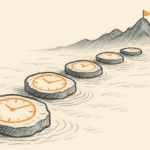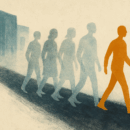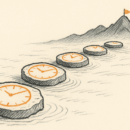What you sell is not what your customer buys
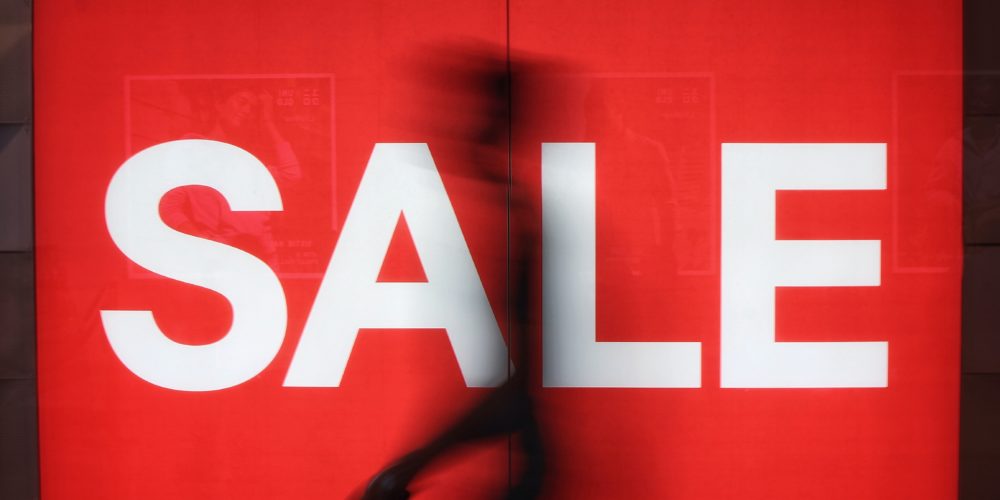
If you sell something (which is most of us), here’s one of the most important sentences you’ll ever read:
“People don’t want to buy a quarter-inch drill. They want a quarter-inch hole.”
That was written by Harvard professor Clayton M. Christensen, who attributed it to Theodore Levitt. It probably came from Leo McGivena, originally. Whatever the case, you must pay attention.
No one needs a drill in their life. They need what the drill can do. Which is, to make holes. The sentiment in the sentence doesn’t go far enough, though. No one needs holes in their walls, either. The holes are there to do something else, which might be to support a display shelf of some sort. So what is the real job to be done (as Christensen termed it)? In this case, perhaps to display stuff for visitors to look at. So we can go further, and say that no one wants the drill, or the hole, or the shelf, or even the display. What they want is the feeling bestowed by having things on show: status, perhaps; the respect of peers; the signalling of economic worth.
People don’t buy products or services. They buy feelings.
I remember saying this to my friends at Toyota Kenya some years back. That young lady who’s walked into your showroom to look at buying her first car? She’s not there to buy a car. She’s there to buy the dignity or safety that comes from escaping public transport. Or to buy self-worth, a sign of her personal advancement.
A gentleman with some grey hairs and substantial girth has also walked in to look at a car. Only one car, mind: the top-of-the range luxury four-wheeler in the corner. Nothing else will do. Is this person buying a car? No. He is buying status, a signal to the world of being one of the elite. In his case, price sends a perverse signal; the higher the better!
Both buyers have walked into the same showroom, purportedly to buy a car each. Yet the feelings they are chasing are very different. The biggest mistake the seller can make is to try and sell cars, rather than understand the feelings that are being craved. (To their credit, Toyota understood this very well!)
No one in the world is interested in buying insurance. No one wants the paperwork, the complexity, the uncertainty. All that the customers want is safety and protection against loss. Feelings, in other words. No one buys a football club’s shirt to cover themselves. They buy a uniform of belonging; a signal of loyalty; support for a cause.
Look at my own profession. What am I selling? The products are advice, courses, books and the like. What are folks actually buying? Just one thing: the hope of their own success and advancement. That is all. Should I sell courses or advice or books that fail to help people in their own lives, I fail.
Really successful organizations have always known this fundamental aspect of selling. Coca-Cola figured out a very long time ago that it was not just selling soft drinks. EABL has never just sold beer. Apple knew from the get-go that the iPhone was not a phone. Safaricom doesn’t sell you data or a payments platform.
They are all selling feelings. Human beings do not buy functionality or utility; they buy feelings. They buy self-respect; they buy self-confidence; they buy safety; they buy ease; they buy lots of essential sentiments—things that go on in their heads, not in the physical world. That is why one of the most interesting subjects in management education these days is business psychology; in particular, why consumers behave the way they do. People who understand the human mind, and who can empathise with hidden emotions, are as valuable to the thinking CEO as those who can build products or services.
Think about it. What do you sell? Food? No. Fond memories of childhood, perhaps. Comfort when life is tough. The feeling of being with the in-crowd. Better health for the family. You might be making food, but have you learned how to sell feelings? Probably not. You sell banking, you say? Nope, no-one has ever bought banking. They don’t even buy savings or loans or payments. They only buy your support and facilitation in their own lives. Bank customers buy the same feelings as they do with other products: safety, convenience, advancement.
So here’s an urgent business priority for you: help your team to understand what is really being bought. Work it down all the way to the core feeling that’s driving the purchase. Once you understand that, reverse engineer your product or service so that—finally—you can design, build and sell the thing that’s actually being bought.
(Sunday Nation, 20 February 2022)

Buy Sunny Bindra's new book
The X in CX
here »
Popular Posts
- Where are you rushing to—your funeral?June 29, 2025
- The map will appear—once you start walking.July 6, 2025
- How to spot a real thinkerJune 15, 2025
- Built the app, forgot the flowJune 22, 2025


